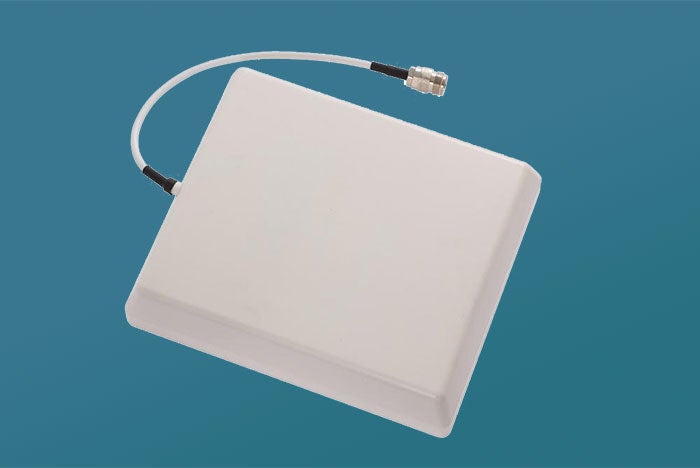Emergency radio service compliance

A DAS can be used to rebroadcast cellular signals within a health care facility.
A reliable communication system is critical in an emergency situation to enable emergency responders to effectively save the lives of building occupants and protect themselves.
Building codes have long required functional coverage of an emergency radio service (ERS) dedicated to serve emergency responders throughout a facility. Typically, the National Fire Protection Association’s NFPA 72, National Fire Alarm and Signaling Code; the International Fire Code’s IFC Section 510; and a rapidly growing number of state, county and city codes apply to both new or existing buildings. However, not all states or local authorities having jurisdiction (AHJ) adopt the same codes or the same editions of codes, so an organization should know which codes are enforced locally.
You may also like |
| Critical communication during emergencies |
| Planning a mass notification system |
| Converging infrastructure technology systems |
|
|
ERS operates on a dedicated 800 megahertz (MHz) radio communications frequency band and is ultimately licensed by the Federal Communications Commission. Typically, a license is contractually obtained through local city and county agencies that manage the 800 MHz frequency. NFPA 72 and IFC 510 require that 95 percent of each floor of a building meet the signal strength required by code, which is defined as -95 decibel-milliwatts (dBm).
Answering the challenge
Local code officials who are tasked with overseeing compliance with NFPA 72 and IFC 510 have put a high focus on code compliance. Many facilities professionals find themselves required to implement additional infrastructure and systems to comply with NFPA 72 and IFC 510. Often, the best solution is a distributed antenna system (DAS) that rebroadcasts the 800 MHz signal received from outside the building (called the donor signal) and distributes it within the building for mobile radio use.
With frequent code revision cycles at the national level and different code iterations at the local level, compliance with these codes quickly can become cumbersome and confusing for facilities professionals, whether building a new facility or renovating/upgrading an existing facility. The right team can help to clear the confusion and support facilities professionals in implementing the right system.
A DAS implementation or expansion project starts with getting the team members in place. At a minimum, the team should include the facility owner’s representatives and a DAS consultant. The owner’s representatives should include those involved in planning construction projects as well as the facilities staff who will be responsible for ongoing system maintenance. The DAS consultant ideally is a radio frequency engineer with previous DAS design and implementation experience who is knowledgeable about NFPA and IFC codes, and understands the perspectives of the local codes officials so they can help to navigate local code interpretations.
Selecting the right DAS installer and commissioning provider is also an important step in getting the right team. Both can be brought on board through direct negotiation or by bidding the project among qualified providers. Qualities to look for include depth of experience in similar building types, ability to perform and provide the necessary resources to complete the project, and their understanding of the specific requirements of the facility, especially infection control procedures.
The commissioning provider should be brought on board early in the project, to help develop and document the owner’s project requirements (OPRs), and develop a commissioning plan that defines the benchmarks of successfully meeting those requirements. It’s beneficial to have a pre-contracting meeting with the installer to assure that expectations are aligned and that they understand the OPRs.
In addition to the project design, installation and commissioning team, the local AHJs play an important role. Effective coordination is key. The first step is to identify who they are because there can be multiple points of interface needed. For example, in some areas of the country, radio frequency use is managed by a third party, which requires that a facility owner contract with them.
In addition, the local building department and fire department may also be involved and require their own respective permits. It is best to initiate a meeting with the code authorities at the outset, to review the project parameters, express any code exceptions that may be desired and why, and discuss the project implementation plan and timeline.
DAS can carry signals other than the 800 MHz ERS; a DAS investment can be leveraged to rebroadcast cellular signals within the facility. This can support mobile health applications, bring-your-own-device programs, and better cell coverage for patients and visitors.
If this usage is included in the project objective, mobile service providers (MSPs) may be willing to underwrite the cost of bringing their service into the hospital and installing their equipment, assuming a favorable return on investment.
The negotiation process can be lengthy (six to 12 months), so facilities professionals should start this conversation early in their project development. MSPs will want to review the facility’s daily census data to determine if the amount of traffic and anticipated mobile data usage justifies their investment. A high-coverage area (an entire building or campus) also is an MSP priority, making ERS DAS projects of interest, because the code-
required coverage area is high.
If MSP funding isn’t a viable option, facilities professionals should plan room in the capital projects budget to implement a DAS platform for the ERS.
Devising a plan
With a team in place, the next step is a project plan, which starts with identifying goals, especially if the DAS will be leveraged now or in the future for services other than ERS. There are some key elements that will shape the plan:
- Find out what local entity legally controls access to the 800 MHz band. There may be multiple permits and contracts in some jurisdictions.
- Conduct a coverage survey to identify which areas receive the 800 MHz signal and which do not. This enables the team to focus on the areas that need mitigation. The DAS consultant can conduct the survey or a facilities professional can hire a DAS installer for the task. They should be aware that they’ll need permission from the local code authority to generate signals on the 800 MHz band to test signal strength.
- Determine whether the organization needs to seek NFPA and IFC code exemptions; for example, if a facilities professional plans to achieve coverage in phases for an existing facility or as part of phased renovations or additions. The approach should be discussed with the local AHJ so they understand the facility’s commitment and plan to meet coverage requirements.
- Determine the best way to get the ERS or MSP donor signal. Options include using rooftop antennas if there is line-of-sight from the facility, or an internet service provider can bring it in. One or the other may serve better in the long term if the DAS is being used for multiple purposes.
- If leveraging the DAS to carry mobile signals, determine which MSPs are to be covered, and which are willing and able to bring in their service. Each will have specific requirements and contract terms and conditions that should be reviewed.
- Determine the cost to comply with ERS coverage requirements and confirm a funding source.
- Assess whether existing telecommunication rooms have capacity for the new equipment, or if new rooms need to be created.
- Determine if normal operations will be impacted by a DAS installation to meet the code-required ERS coverage. Code authorities may grant a rare exception to the ERS code requirement if they are.
With these items evaluated, the team can document the OPRs, develop tasks and project milestones, and a timeline for negotiations, contracting and implementation. Then it’s on to system design and deployment.
Developing the system
The DAS consultant will begin by reviewing the results of the coverage survey. Software packages are used to determine existing coverage levels and then display them as different colors to show varying received signal strengths, measured in dBm. From there, they will start the system design.
At a high-level architecture, a DAS consists of head-end equipment that receives ERS signals as well as signals from each MSP. The ERS head-end equipment is separate from that of the MSPs. A vertical riser, usually a fiber optic cable, transports the donor signal to each floor. It’s often located within the stacked floor-by-floor telecommunication closets. Active equipment like powered amplifiers are connected to the fiber as needed in selected telecommunication rooms to amplify the signal.
At each amplifier, coaxial cables are attached to route the signals throughout the floor, typically above the corridor ceiling. Antennas are placed along the coaxial cable with overlapping coverage to consistently meet the -95 dBm and 95 percent coverage-area requirement. The antennas are mounted below the ceiling, usually located within the corridors at doorways, including elevator doors and stairwell doors.
It is beneficial for antennas to have a service loop to allow moving the antenna if needed to tune coverage. Antennas can accommodate multiple frequencies and come in a variety of design profiles, though most are dome-shaped.
Once the system is installed, it must be commissioned and optimized. These are related yet separate procedures during the phase of bringing the system online. Typically, commissioning begins with injecting a simulated signal into the system to ensure that all connections are sound, active equipment is functioning properly, and coverage requirements are met.
Optimizing the system is done with a live signal and performed to ensure that the system meets the OPRs and operates as designed. Adjusting power levels to specific areas and confirming uplink levels with the AHJ are typical steps during the optimizing phase.
Facilities professionals should remember that commissioning and optimizing an ERS must always be coordinated with the AHJ in advance of the work.
The imperative
Annual testing is required to ensure that all electronics and power supplies are working properly and test logs are provided. This provides regular opportunity for system tuning and is an important step, especially if coverage was altered during facility remodeling or renovation.
The technical goal of a DAS implementation for ERS is to ensure that facilities have the infrastructure and systems they need to comply with code. However, the real goal is to ensure that first responders have the communications support they need during an emergency.
Tom Leonidas, P.E., is president and CEO of Wood Harbinger, Bellevue, Wash., and Duane John is a radio frequency and DAS specialist at Spec-X Global, Hilliard, Ohio. They can be reached at tleonidas@woodharbinger.com and Djohn9163@hotmail.com.





